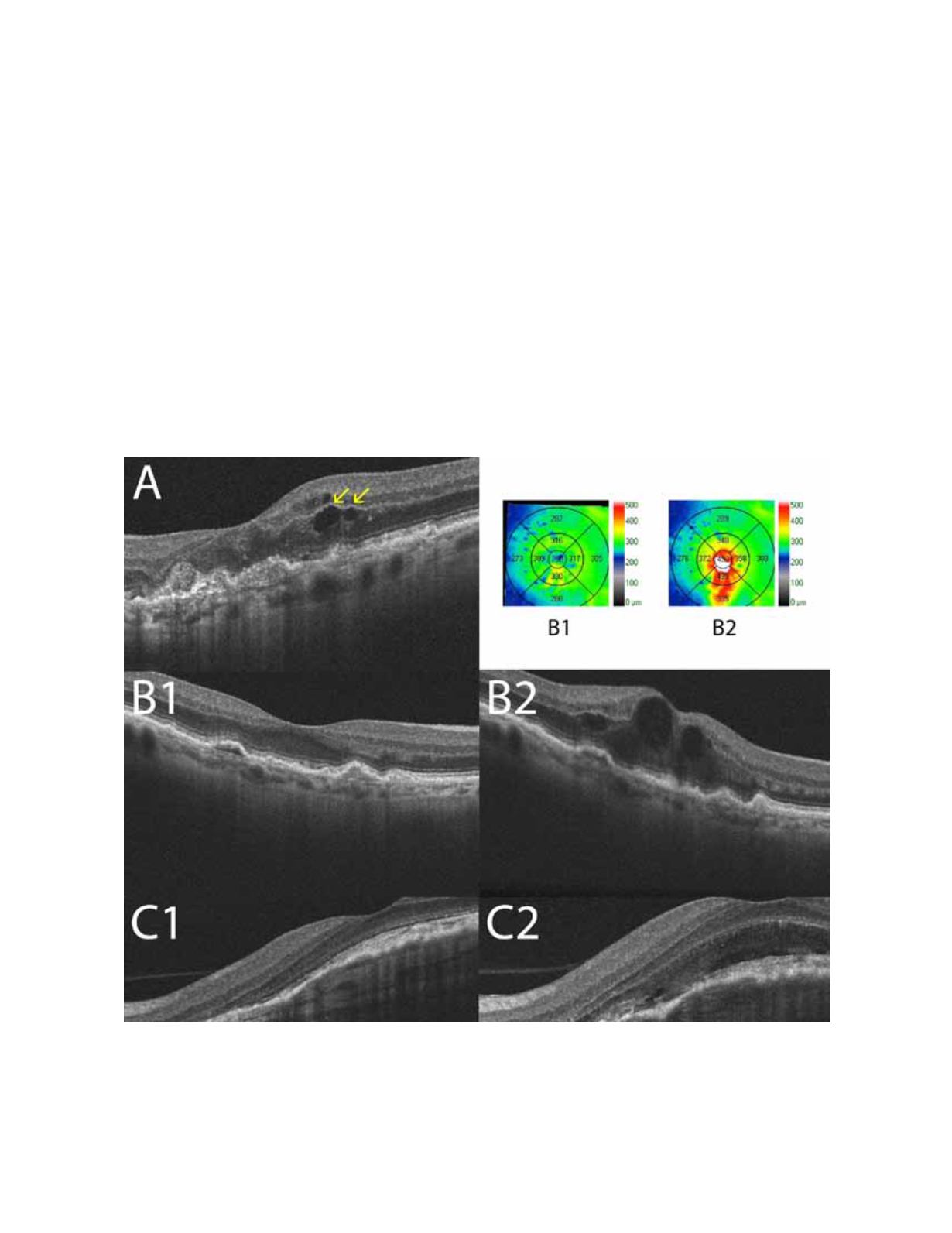
248
of new additional doses were left to the discretion of the
investigator based on the presence of diffusion on FA or
intraretinal or subretinal fluid on OCT. This subanalysis
showed that often the presence of retinal fluid could be
detected much earlier by OCT than FA, leaving the door
open for a greater role of OCT in treatment.
Considering this, Fung and colleagues at the Bascom
Palmer Eye Institute in Miami, Florida, proposed the
PrONTO Study. In that study, after three monthly
loading doses, monthly retreatments of ranibizumab
were administered for 2 years according to the criteria
in Table 3. Three criteria are based on OCT analysis
(decreases exceeding five letters of VA [ETDRS] with
fluid in the macula detected by OCT, increases exceed-
ing 100 microns in central retinal thickness compared to
Figure 18.
In the PrONTO clinical trial, three criteria of retreatment are based in the analysis by OCT: Decrease of more than 5
letters of VA (ETDRS) with fluid detected in the macula by OCT(A), increase of more than 100 µm in the central retinal thick-
ness respect to the lowest previous value measured by OCT (B1, B2) or fluid reappearance in the OCT in a previous dry lesion.
(C1, C2)
previous lowest value measured by OCT or the recurrence
of fluid on OCT in a previously dry eye) (Figure 18).
54
The VA results of the study were similar to those of previ-
ous phase III trials but required significantly fewer injec-
tions (an average of 5.6 vs. 12 injections during the first
year of the study and 9.9 vs. 24 injections to complete
the second year).
The good results obtained with the varying numbers of
injections based on OCT led to the inclusion of OCT as
a primary criteria in new multicenter studies such as the
SAILOR or SUSTAIN studies. Those studies included
a larger number of patients than in the original early
study (n = 40) and confirmed the role of OCT in patient
monitoring.


